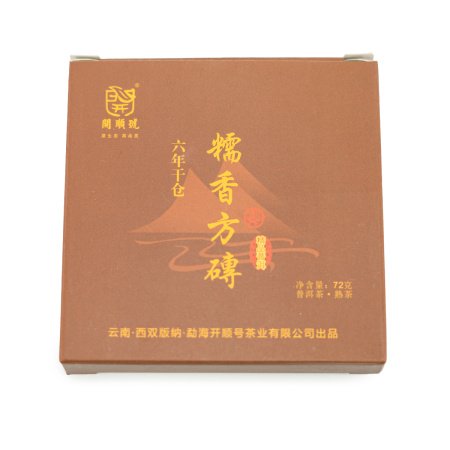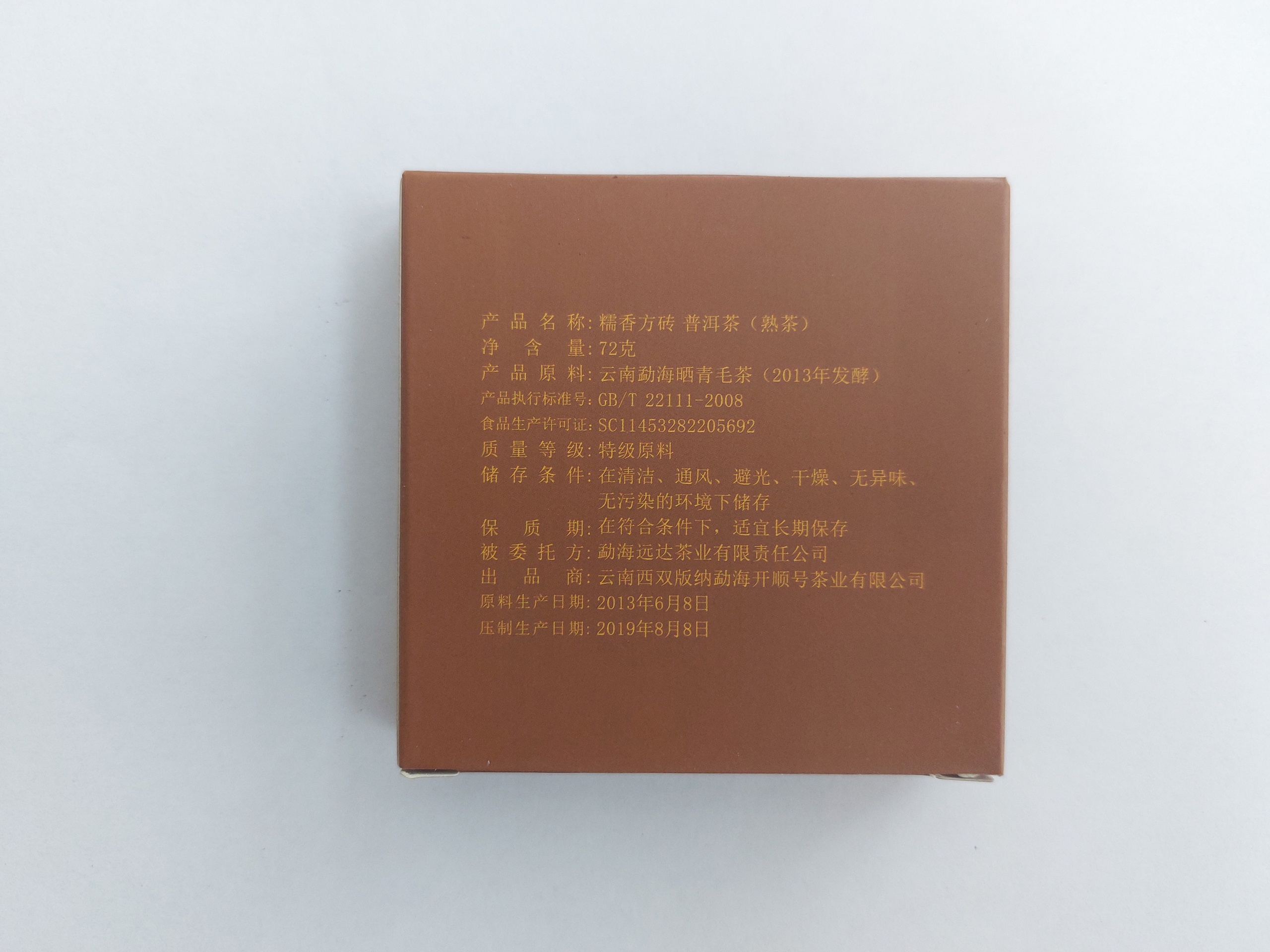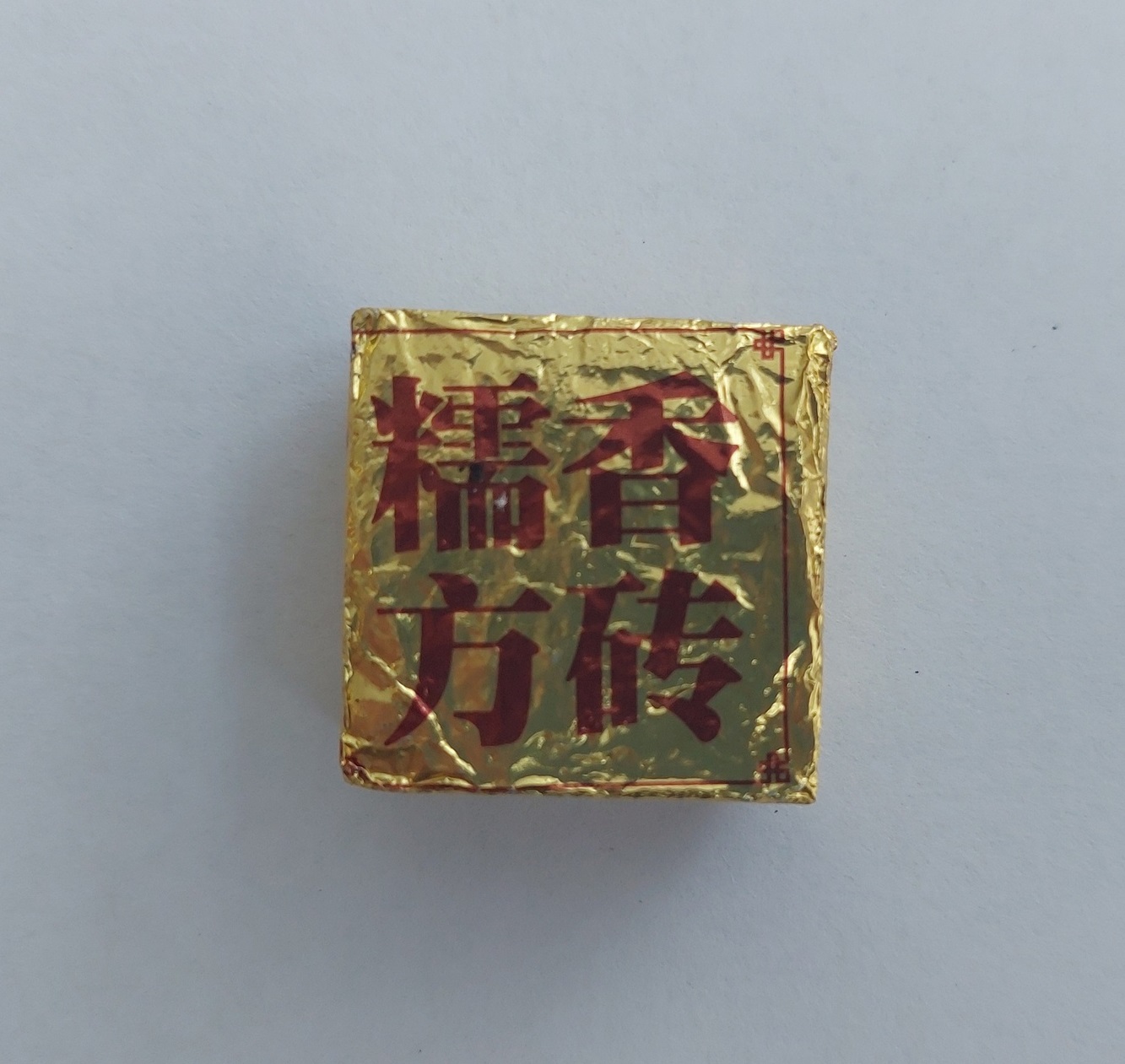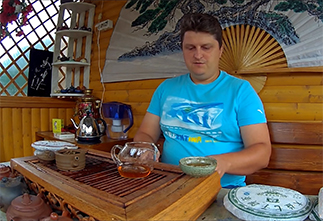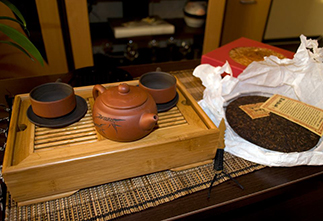-
0 Saturation
-
0 Aftertaste
-
0 Aroma
-
0 Effect
-
0 Balance
-
0 Body
Шу Пуэр 2013 г. "Вкус Номи сян" от "Кайшуньхао": Изысканный кубик удовольствия
Шу пуэр 2013 г. "Вкус Номи сян" от знаменитого завода "Кайшуньхао" – это настоящий шедевр чайного искусства, заключенный в компактный кубик. Этот чай обладает уникальным вкусом и ароматом, которые раскрываются с каждым новым завариванием.
Что особенного в этом чае?
- Удобный формат: Чай упакован в небольшие кубики по 6,5 грамма, что очень удобно для заваривания. Не нужно отламывать кусочки от большого блина, достаточно взять один кубик.
- Высокое качество: Завод "Кайшуньхао" славится своим высоким качеством продукции. Этот шу пуэр не исключение – он изготовлен из отборных чайных листьев, прошедших тщательную обработку.
- Уникальный вкус: "Вкус Номи сян" – это не просто название, а отражение характерной особенности этого чая. "Номи сян" – это аромат клейкого риса, который придает чаю сладковатые нотки и делает его вкус более мягким и округлым.
- Многогранность вкуса: Вкус этого шу пуэра насыщенный и многогранный. Помимо ноток клейкого риса, в нем можно различить нотки ферментированных злаков, орехов и древесины.
- Полезные свойства: Шу пуэр, как и другие виды пуэра, обладает множеством полезных свойств. Он способствует улучшению пищеварения, укреплению иммунитета и повышению энергии.
Почему стоит попробовать этот чай?
- Удобство заваривания: Кубики легко заваривать как в гайвани, так и в обычной чашке.
- Высокое качество: Вы можете быть уверены, что получаете настоящий качественный пуэр.
- Уникальный вкус: "Вкус Номи сян" – это настоящий гастрономический опыт.
- Полезные свойства: Помимо удовольствия, вы получите и пользу для здоровья.
Как заваривать?
- Температура воды: Оптимальная температура воды для заваривания шу пуэра – около 95°C.
- Время заваривания: Первую проливку можно делать на 5-10 секунд, последующие – увеличивая время по своему вкусу.
- Количество чая: Один кубик рассчитан примерно на 150-200 мл воды.
Шу пуэр 2013 г. "Вкус Номи сян" от "Кайшуньхао" – это отличный выбор для тех, кто ценит удобство, высокое качество и уникальный вкус. Этот чай станет прекрасным дополнением к вашей чайной коллекции.
|
Country
|
China |
|
Manufacturer
|
Кайшуньхао (开顺号) |
|
Raw material production date
|
6.08.2013 |
|
Year of pressing
|
2019 |
|
Declared weight, g
|
70 |
- Reviews
- Vkontakte
Pu-erh is one of the most unique types of tea, which only gets better with age. Many people, when they first encounter this tea, wondered: why is pu-erh more often found in pressed form (cakes, bricks, tochas), and not in loose form? The reasons for this are related to both history and the practical aspects of storing and fermenting tea. Despite modern technologies that allow the production of loose pu-erh, the shape of pressed cakes remains unchanged. And pu-erh is more often found on sale in pressed form, for example, in the form of cakes or bricks, and loose pu-erh is less common. We will talk about the reasons for pressing pu-erh into cakes in this article.
Puer is a unique Chinese tea that is distinguished by its depth of taste, complexity of aromas and versatility of aftertaste. Its taste characteristics are formed under the influence of many factors, from growing conditions to the brewing method. Let's look at the main ones.
The question often arises: how to brew puerh correctly? Sometimes the phrase "to get high" is added to it. Moreover, everyone has their own understanding of this phrase. Some mean vigor, and some - intoxication. So how to brew puerh tea correctly? Let's consider several options.
Traveling through the tea mountains, we found ourselves in another land of blue roofs - the village of Zhongcai, which is located in the Menghai district of Yunnan province. According to tradition, we were shown another local tea tree, which, according to the Chinese, is at least a million years old :) The village is very authentic, not designed for tourists, there are many wild pu-erhs there and, of course, we were warmly received. They treated us to local cuisine and tea. We also asked the residents about the prices of tea and how they have changed in recent years.
The tea ceremony occupies a special place in the centuries-old Eastern tradition. And although the essence of this phenomenon remains constant, the nature and external manifestations of the tea ceremony in different nations have their own national characteristics. In each Chinese province, the tea ceremony and the tea used in it are varied: for example, residents of the southern provinces prefer green tea, and residents of the northern provinces - red tea, in Fujian province they more often use Oolong tea, and in Yunnan province Puer tea is widely known.





